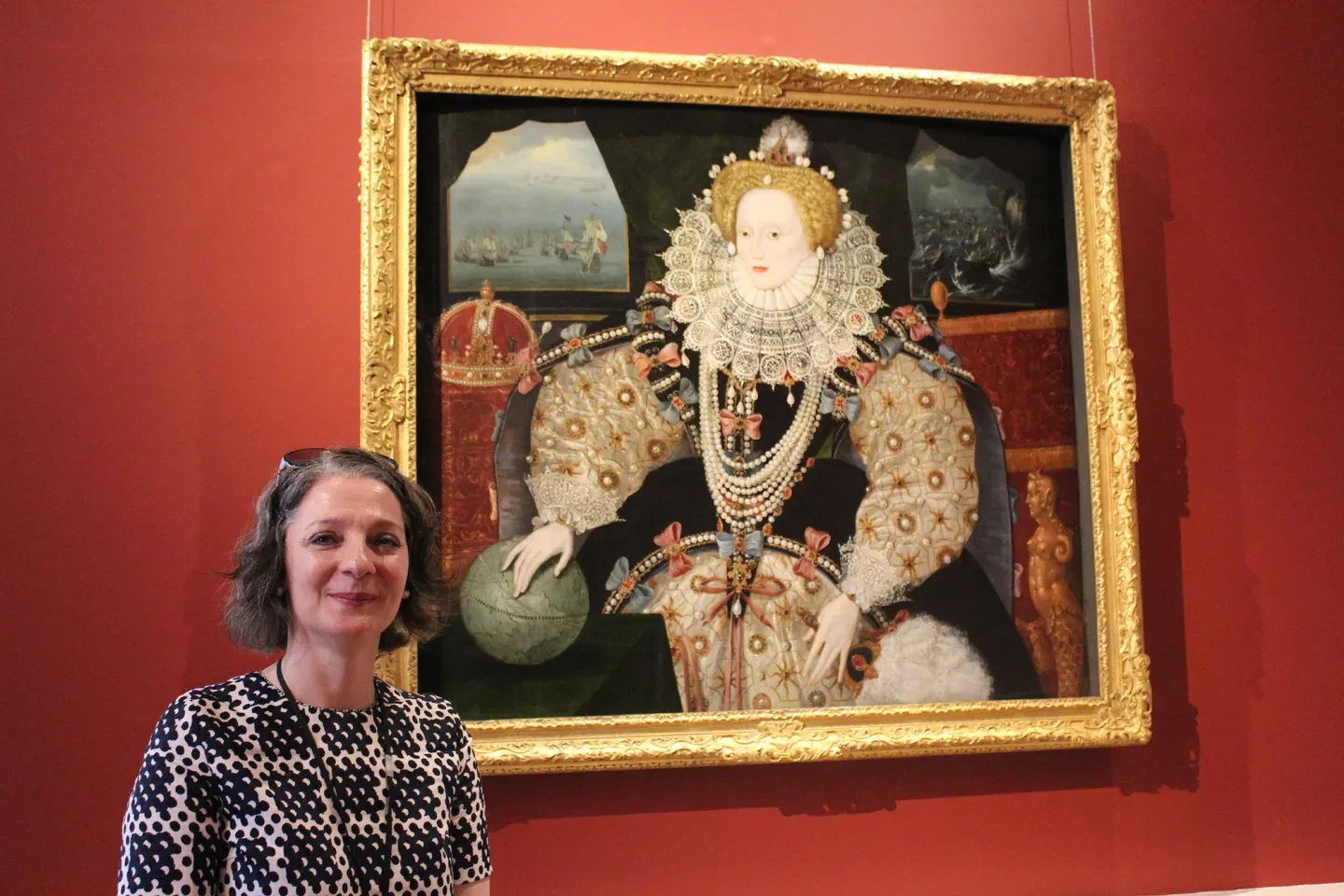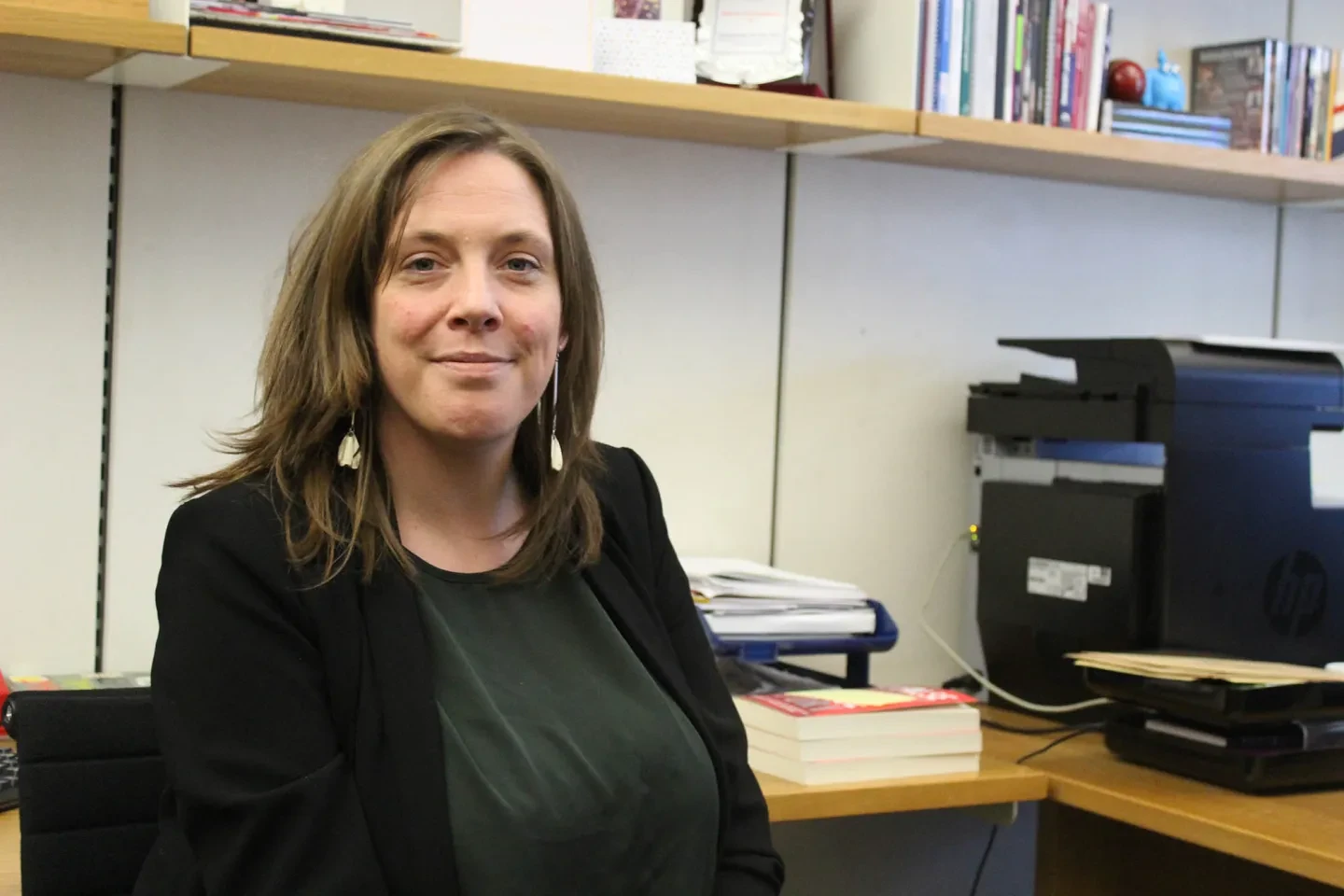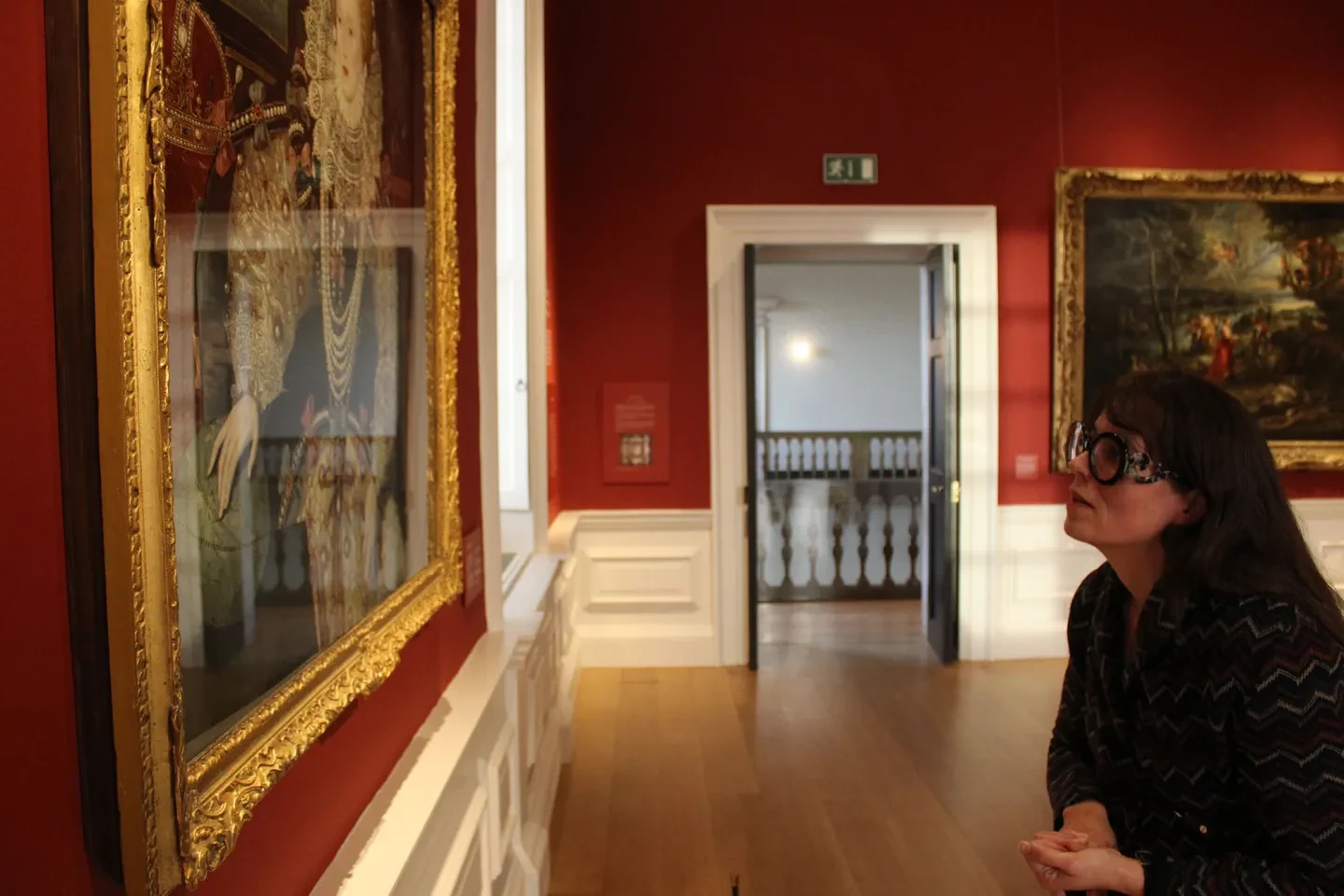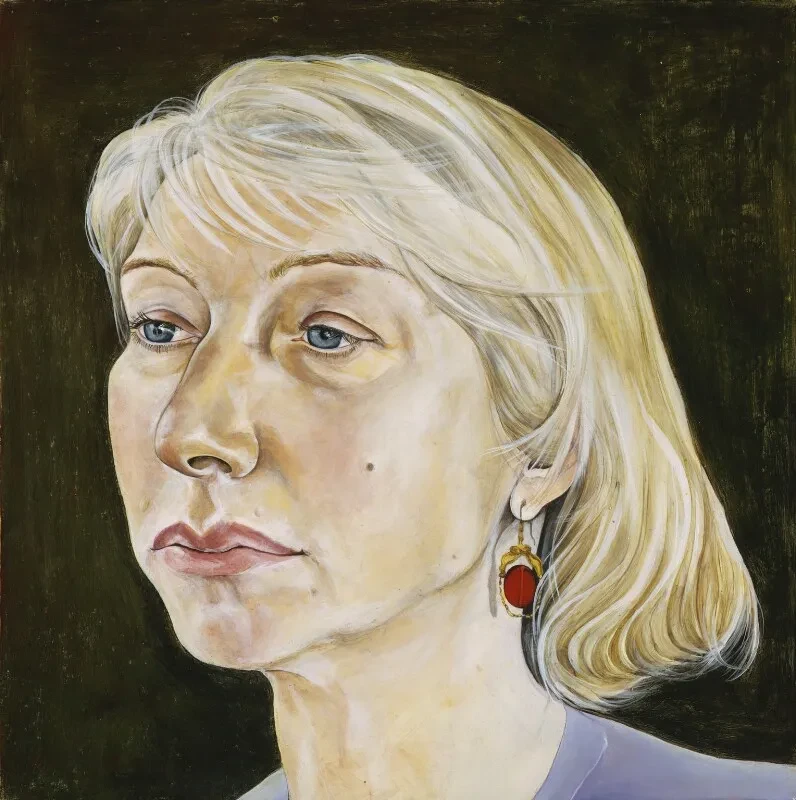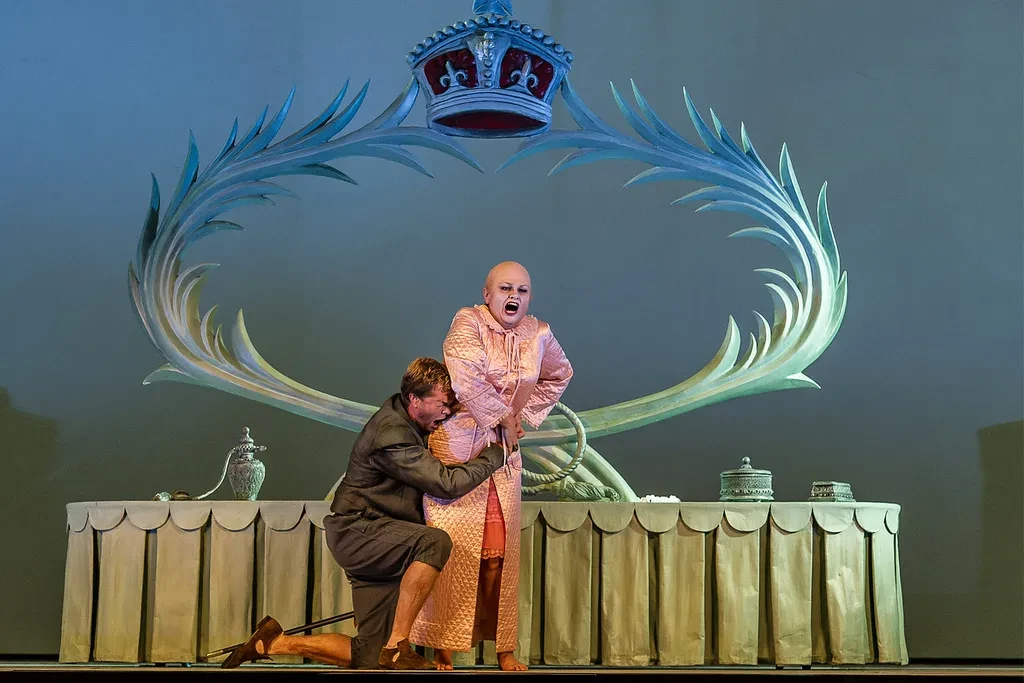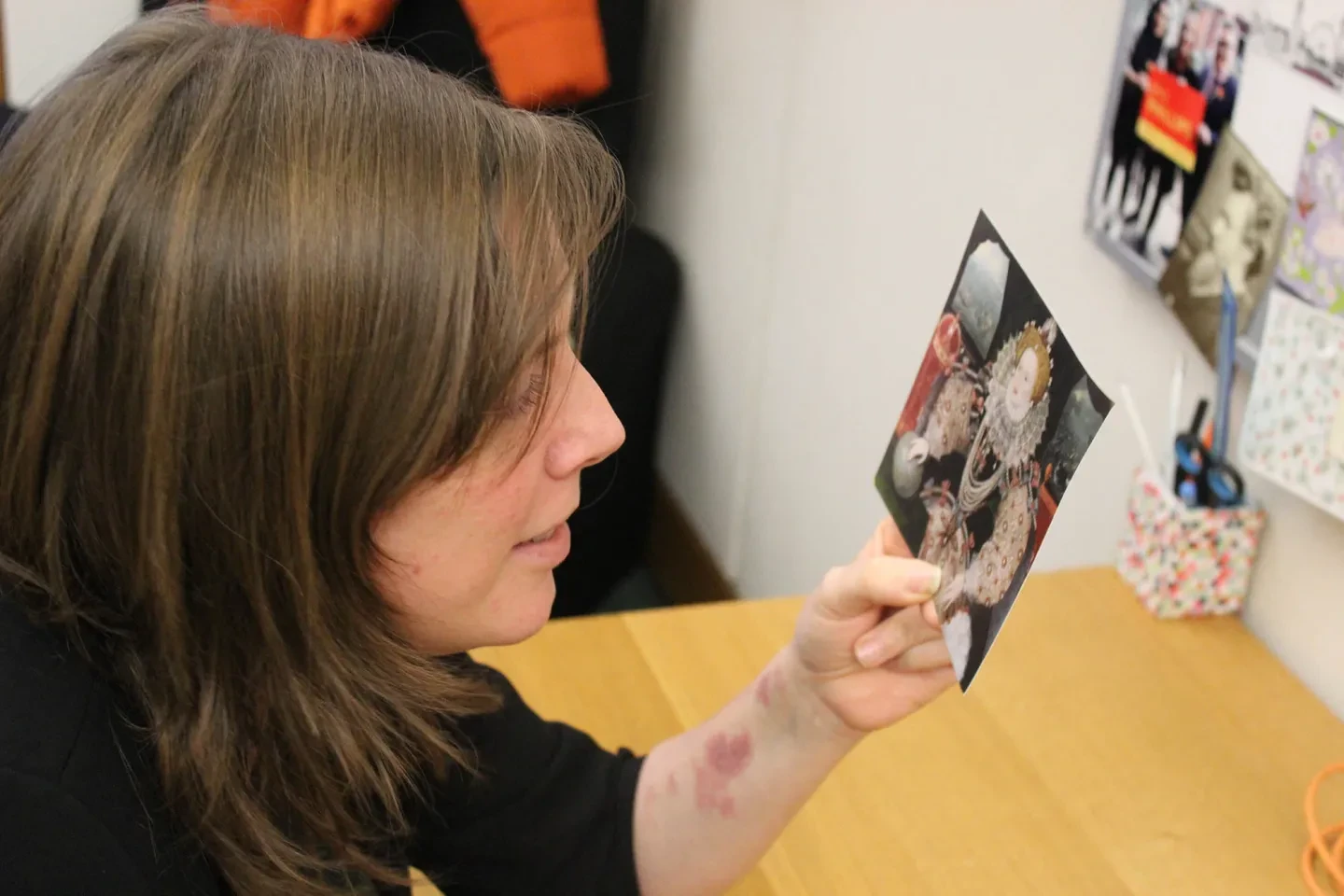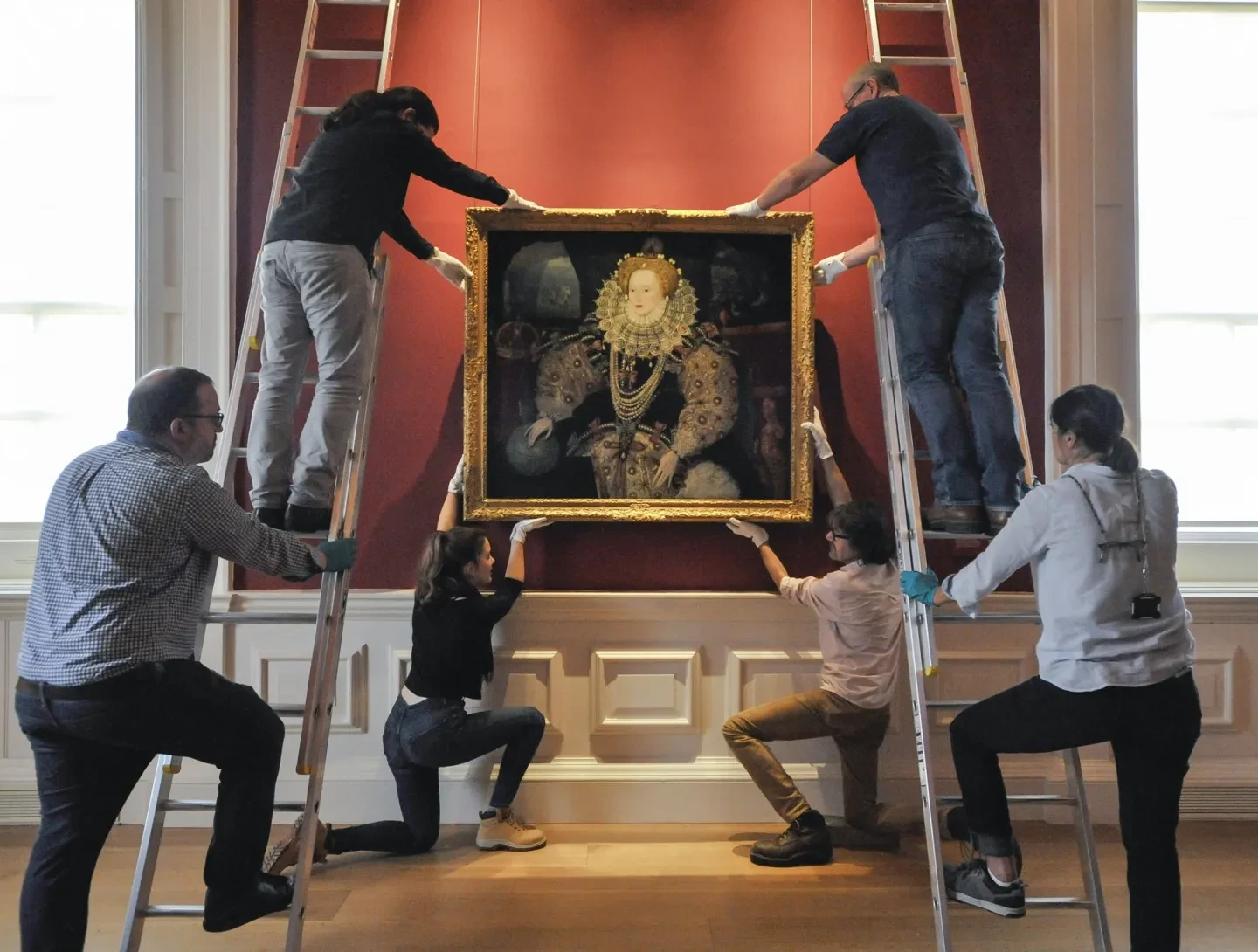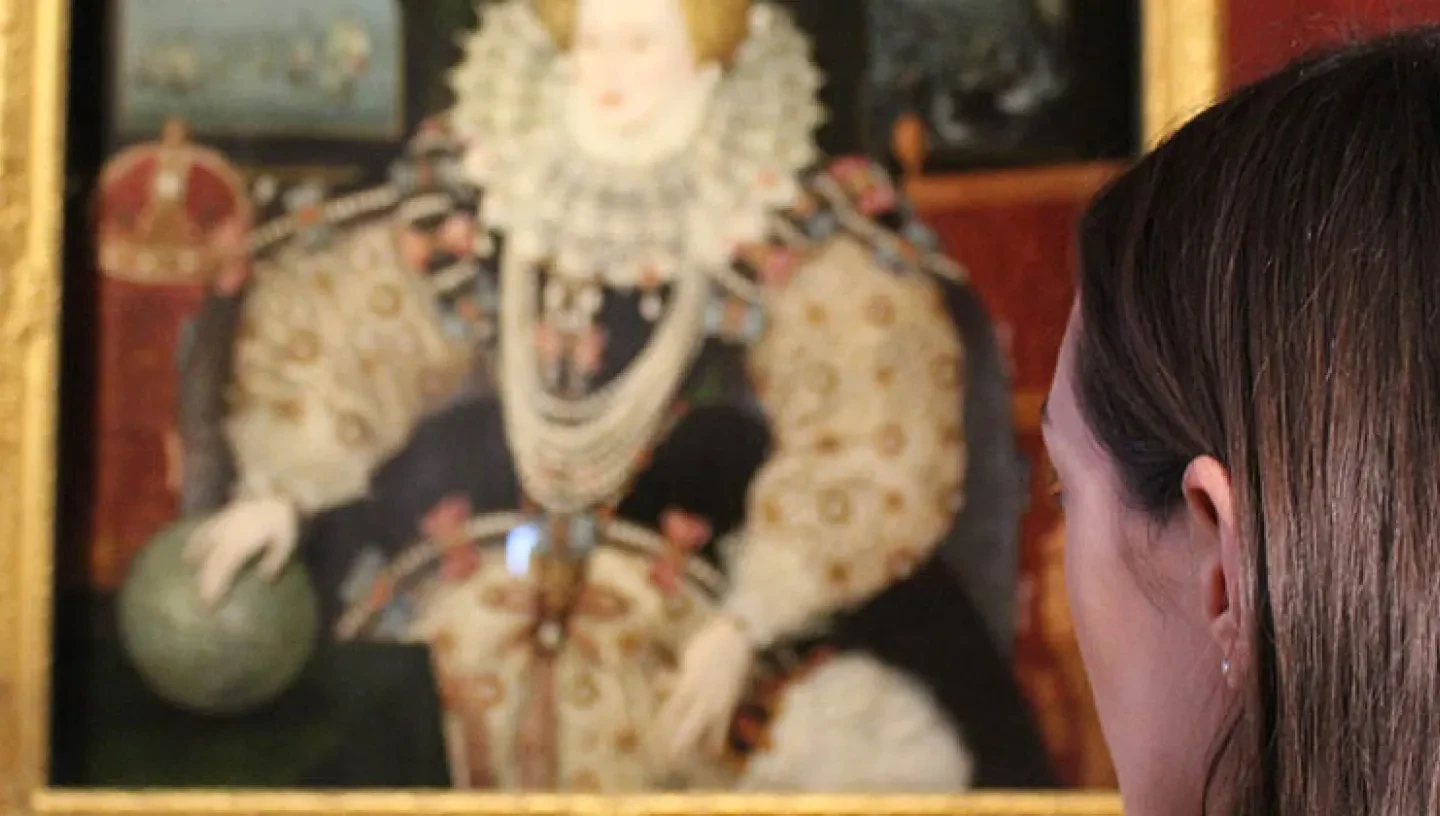
Over 450 years ago, Elizabeth I became queen of England. She reigned over a Golden Age, withstood moral criticism and became adept at image management and power dressing. Women in power today relate to her experiences. But can we claim a 16th century monarch as a feminist?
MP Jess Phillips, curator Christine Riding, and artist Ishbel Myerscough reflect on Elizabeth’s story and share their insights into women, power and politics, past and present.
Until recently, female royal heirs have been on unequal footing with their male counterparts. The custom of primogeniture meant that a younger son would inherit the title over an elder daughter, simply because he was male. Time passed, women were given the vote and rose to positions of power, but still this age-old inequality existed. In 2013, an Act of Parliament was passed that finally brought gender equality to the British royal succession. A female firstborn could now be first in line to the throne, meaning that if William and Kate’s first child had been a girl, she would eventually become queen.
Nearly five centuries earlier, on 17 November 1558, the 25-year-old Elizabeth Tudor became queen of England following a series of impossible-to-predict events. Throughout English history, there had been many queens who had reigned as regents and consorts, and a few who, for reasons of illness or incompetence, ruled as powers behind the throne. But Elizabeth became only the second female monarch to reign in her own right. The first being her half-sister, ‘Bloody’ Mary I.
‘Foolishe, madde and phrenetike’
The issue of female leadership was hotly debated during Elizabeth’s reign. In the year of her succession, prominent theologian John Knox had written an angry polemic entitled The First Blast of the Trumpet Against the Monstruous Regiment of Women. For Knox, female rulers were ‘repugneth to nature’, and compared to men, ‘foolishe, madde and phrenetike’.
Not only did Elizabeth’s status as a woman unsettle her position as a ruler, there were also legal questions about her right to the throne. She had been periodically declared illegitimate by her father Henry VIII and her half-brother Edward VI. When Mary, a Catholic, ruthlessly claimed power from Edward’s chosen heir, Lady Jane Grey (a Protestant), she also expressed her hostility to the Protestant Elizabeth, keeping her detained in Hatfield House. Critics of Elizabeth’s right to rule had hovered her since birth, and when Mary died childless, the England she inherited was fragmented and struggling for global significance.
Despite many challenges throughout her time on the throne, the period of Elizabeth’s reign is now referred to as a ‘Golden Age’. She was an extremely savvy manager of the royal court and saw England through a succession of religious, economic and political upheavals. In direct defiance of Knox’s polemic, Elizabeth modelled to the world the fact that women can cope, and indeed thrive, in power after all.
Female power in a man’s world
Competent to rule?
After surviving a quarter-century of dynastic conflict, Elizabeth’s transition to power was relatively smooth. According to legend, she was sitting under the boughs of an oak in the grounds of Hatfield House when she was informed that her sister had died and she would be the next queen. This moment has become hugely symbolic in the films and literature about her life, visually portraying her deep-rooted right to the English throne. From divine appointment under the indigenous tree, Elizabeth set up her new streamlined power centre within days of her accession.
Some believe that Elizabeth’s rule was heavily manipulated by her advisors. Indeed, in her first address, Elizabeth told her Privy Council, ‘I mean to direct all my actions by good advice and counsel.’ But Curator of the Queen’s House, Christine Riding, warns us not to take Elizabeth’s words at face value. ‘People perhaps made too much of an assumption that Elizabeth would not be competent to rule, and therefore was open to being a kind of cypher to very powerful male figures around her,’ she says. Elizabeth was a skilled manipulator of the men around her, and sometimes used them as a shield to justify and defend her own actions.
Though it’s true that Elizabeth was advised throughout her reign by a close group of trusted men, ultimately she had the final say. She was highly educated and could speak many languages, a skill which gave her an advantage in matters of international diplomacy. Members of her government needed her signature in order to act, and she often didn’t comply with the will of those around her. ‘They might try and manipulate her, they might try and manoeuvre her, they might even try to depose her, but she was in charge,’ Riding says. Elizabeth both reigned and ruled, even as a young queen.
The stereotyping of power
Being both a woman and young means that you have to be cleverer than everybody to be worthwhile, because there are two reasons for people to think you don’t know what you’re talking about.Jess Phillips
When images of power are so often depicted as male, even today, it can be a struggle for women to define power in their own terms. Jess Phillips has been the Labour MP for Birmingham Yardley since winning her seat in the 2015 general election at the age of 34. It’s a young age for a politician (though older than Elizabeth’s 25). In her words, if you’re a young woman running for office today, ‘you have to set out your stall very clearly’ or risk being patronised.
MPs make decisions on policy covering a range of issues, and they will often know more about some of these than others. Problems emerge when gender stereotyping creates assumptions. Phillips has found both positive and negative aspects to being a woman in politics. On the one hand, ‘there’s more weight to your voice on issues about women – children, health, education.’ However, ‘your voice is very difficult to hear on other issues such as the economy, industrial strategy – people think we’re not interested in things like trains!’ In Phillips’ case, the opposite is true – she studied Economic and Social History at university and will occasionally give lectures on the economy to remind people of her breadth of interest.
Abuse of power
Sexual harassment from those in positions of power is an issue that’s especially resonant today. Before she came to the throne, Elizabeth’s youth, gender, and uncertain social position in the British court had already been taken advantage of by people close to her. As a teenager, Elizabeth experienced what we would describe as harassment from Thomas Seymour, a man over twenty years her senior. After her father’s death, Elizabeth lived with Katherine Parr, Henry’s sixth and final wife, who married Seymour. Surviving documents indicate that Seymour pursued the then fourteen-year-old princess in their shared London home, with Elizabeth’s governess observing Seymour approaching Elizabeth in her bedroom, tickling her, ‘strik[ing] her on the back or the buttocks familiarly’, and in one incident, pinning her down and cutting her gown into pieces. The outrage of these events eventually saw Katherine send Elizabeth away. However, following Katherine’s death, Seymour wrote Elizabeth suggestive letters with rumours abound that he wanted to marry her and position himself as future king.
It’s difficult to say how Elizabeth’s experiences with Seymour might have affected her. In later life, she chose not to take a husband, despite the urging of her councillors to make a political alliance and produce an heir. Riding warns against trying to psychoanalyse a Tudor queen, but nevertheless allows that the Seymour scandal ‘can’t have helped with her evaluation of marriage.’
Rebranding the female body
The politics of purity
Regardless of any early trauma, Elizabeth recognised that marriage and motherhood would inevitably lead to dilution of her power. In the 16th century, a sovereign was regarded as holding dominion over the state, while a husband was deemed to hold dominion over his wife. A male consort would have presented Elizabeth with a number of complications. Would a husband seek to overrule her decisions? Would she elevate an English nobleman? Would she form an international alliance? Would the marriage upset factions within her court? As Elizabeth aged it became apparent that she would not become a wife or mother. She had to present herself without the traditional trappings of womanhood to bolster her image - an issue female politicians still find themselves navigating today. During Theresa May’s 2016 Conservative leadership campaign, the fact she had no children was picked on as a weakness by her rivals. ‘It absolutely shouldn’t, but it marks Theresa May’s cards against her,’ Phillips comments.
As her reign progressed, Elizabeth effectively rebranded herself with the label of ‘virgin’, married only to her people and to England. Riding argues that in the context of Tudor monarchy, virginity performed a largely political function. As the ‘Virgin Queen’, Elizabeth’s perceived purity had a ‘political dimension’ and wasn’t just about physical and moral purity. By stating that ‘her motivations, her mode of governance, her acts are all pure in mind and body’, Elizabeth was able to garner support for her reign. She would wear black and white in her portraits as a symbol of her chastity, and this attire was mirrored by many courtiers around her. This colour selection became part of her cult.
This strategy was met with derision from her opponents. Catholics across Europe launched both military and propaganda campaigns against her. William Allen, Cardinal of England in exile, accused her of ‘filthy luste’ and being a serial fornicator. ‘How shamefully she hath defiled and infamed her person and country,’ he wrote in An Admonition to the Nobility and People of England (1588). In rocky political times, any monarch of the period could expect to receive multiple assassination attempts, let alone verbal criticism and the language used against her was both violent and highly gendered.
Sexist language and provocation
Indeed, Elizabeth would have recognized many of the taunts and jeers that people today apply to women in power. In her recent book, Everywoman: One Woman’s Truth About Speaking the Truth, Phillips talks about the level of abuse she receives when her comments are perceived as controversial. She says that if you were to write a history of trolling, all the insults would sound the same. Like Elizabeth, she’s had phrases like ‘dirty whore’ flung at her and insults against her appearance. Often it can go further and in one day in 2016, she received 600 death threats. For female MPs much more than male MPs, she says, ‘scrutiny leads to threat.’
For Elizabeth, Riding says this behaviour was ‘inevitable’ because: ‘you’re going to attack that which makes her vulnerable within the context of the gender politics of the time.’ If a challenger to Elizabeth’s rule could persuade the people of England that they were being led by a fornicator, they could present their attack as an act of religious salvation, as part of a holy war.
Portraiture and the creation of a female icon
We princes are set as it were upon stages in the sight and view of the world.Queen Elizabeth I
One of the key ways Elizabeth consolidated her power was through the commissioning of elaborate, highly symbolic portraits. She successfully built her status as an icon by playing with the conventions of royal portraiture and images of femininity. Her features are recognisable to this day: the curling red hair, faultless pale complexion and ageless beauty. As the ‘Virgin Queen’, Elizabeth has been seen by some as a Mary-figure: virgin and mother to a protestant nation. But in addition to this obvious maternal appeal, Elizabeth often appears fierce and striking. The eyes and ears seen on the dress depicted in her Rainbow Portrait tell onlookers that she can see and hear everyone, her enemies included.
‘In the past, the portrait was your only image and everybody would see it,’ says artist Ishbel Myerscough. This gave monarchs - with their artists - the ability to define their appearance through art, whether it matched their real likeness or not. Developments in technology such as printing allowed Elizabeth to spread her image to a wider audience, through miniatures, prints, pamphlets and coins.
In The Armada Portrait of Elizabeth I, which was painted shortly after the English defeat of the Spanish naval invasion, Elizabeth is in her fifties yet maintains a youthful appearance. Her hand resting over the globe reflects her colonial ambition, while the intricacies of her dress and jewellery paint a picture of feminine magnificence. She gazes out steadily with her back to the stormy seas of naval conflict with Spain. Used as propaganda, this portrait formed a part of a series which would have been spread across her realm to reinforce her powerful image.
Nowadays, portraiture remains a popular art form, but photography has meant that women in the spotlight today have far less control over their public image than before. Having won the BP Portrait Award in 1995, Myerscough asked to paint Helen Mirren for the National Portrait Gallery because ‘there weren’t enough women and I didn’t want to do another middle aged man in a suit.’ Representing power and success in portraiture gives Myerscough an interesting challenge. ‘You have to reflect the weight of their success in the painting,’ she says, ‘but not in a ridiculous way’. Unlike the elaborate decoration of Elizabeth’s portraits, Myerscough depicts her powerful sitters in a simple style: ‘When I did Helen Mirren I just wanted to do her head, I wanted it to be very clean and clear and who she was.’ Mirren went on to play both Elizabeth I for the 2005 TV mini-series and Elizabeth II in The Queen the year after winning two Golden Globes, an Emmy and an Oscar between them.
Dressing for power
When Elizabeth is in her private apartments she can have her wig off, she can wear a shift, she can be an ageing woman. That’s the private Elizabeth: she is a human being with a body that will deteriorate. As soon as she walks out of the doors of her private apartment she is the Queen, and she must look like the Queen. She is on parade and her dress is vital.Christine Riding
Dress has long been a significant way for a person to showcase their authority and status. A bold outfit can have a striking effect on its onlooker. As such, power dressing can be a way for women to exert some form of control over their political career. However, in reality, image management can be a tricky game to play: present yourself well and you will be worshipped; make a slip and you will be devoured. Female political leaders often fall under more intense scrutiny than men even today. ‘Both men and women are incredibly hard on other women,’ Myerscough says. From Theresa May’s shoes to Nicola Sturgeon’s legs, it can feel as if media organisations analyse female politician’s appearance more than their policy.
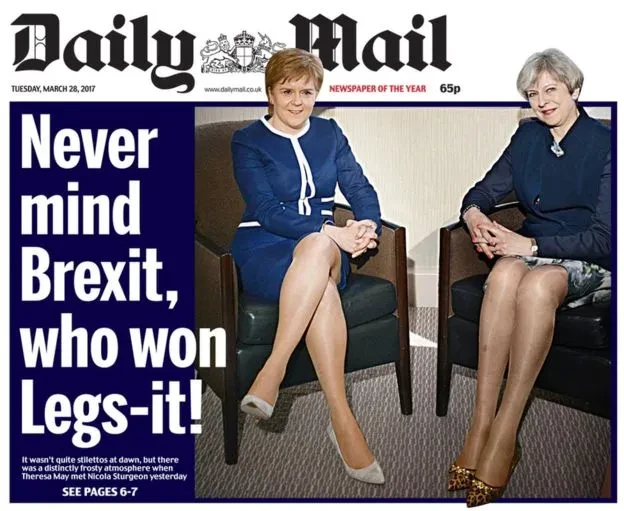
Myerscough suggests that one reason why women tend to have it harder than men, particularly in a political context, is that men have a uniform – they wear a suit – whereas women don’t have a uniform. Politicians such as Angela Merkel deal with the issue by creating their own uniform: wearing the same clothes and keeping the same hairstyle. The media get bored and are forced to talk about something else. When Helen Mirren starred in The Queen, she told Vanity Fair about what it was like to dress up as Elizabeth II: ‘It’s like a policeman wearing a uniform. She’s wearing her uniform. She doesn’t care what she looks like in it as long as it’s the right thing for the right moment.’
As in her paintings, Elizabeth needed to maintain her majestic presence as the divinely-appointed monarch through her physical appearance for the people who saw her in the flesh. She needed to look impeccable at all times and her dress, makeup and jewellery were splendid, as well as a significant financial investment. In the sixteenth century textiles were far more expensive than paintings, and for Riding, when Elizabeth is in public ‘she’s a mobile advert for her own authority’.
Despite her best efforts, however, it was impossible for Elizabeth to have full control over visual representation. Towards the latter half of her reign, Elizabeth showed favour towards a young and gallant courtier, Robert Devereux, the 2nd Earl of Essex. At one point in their relationship, Devereux famously burst in on Elizabeth in her private chambers one morning before she had fully dressed, applied her makeup or put on her wig. It was an outrage and Elizabeth banished Essex from her sight and favour. He had seen her as the private Elizabeth, an ageing woman. The intrusion was ‘a violation of her persona as Queen,’ as well as ‘a really good example of when a line was crossed,’ Riding says.
Was Elizabeth I a feminist?
We do need to get away from the idea that Elizabeth, or indeed any woman of the period, is a proto-feminist as we would understand it. She is completely bought into the idea of hierarchy and monarchy and her role within that.Christine Riding
Over the years, Elizabeth I has been held up as an example of a strong female leader and even at times as some form of feminist icon. Though she was indeed a strong leader, the hierarchical values of her era make it impossible to impose our own modern ways of thinking to her situation, which was unlike the lives of the majority of women of her time and very few since.
Throughout the course of the European Renaissance, women’s education was on the rise, but only for an elite minority. As a monarch, Elizabeth sat at the top of this elite and she would have felt the superiority of both her education and birth. She would have believed herself to be appointed by God to rule the nation.
‘This is the Lord's doing, and it is marvellous in our eyes,’ Elizabeth reportedly said when she was declared the new queen. Her royal signature sealed the death of her enemies and her favour determined the hierarchy of her court. She was a confident queen, but it is hard to find anything particularly sisterly in her behaviour. Members of the aristocracy needed to ask her permission to marry and she has been seen by some as prone to jealousy and vanity (although it was standard royal prerogative to manage the political implications of marriages). She was often hard on the women who waited on her and famously executed, however reluctantly, her closest surviving female relation, Mary, Queen of Scots.
Ishbel Myerscough doesn’t see Elizabeth as a feminist; rather, she looks to the Tudor queen as ‘an individualist’: ‘If you live such a bizarre life for so long and you’ve created this image, I think you become your creation. I think she probably thought she was somehow God-like because she didn’t fit to norms.’
Jess Phillips agrees. For her, ‘feminism is about actions rather than who you are.’ Phillips is in some ways the anti-Elizabeth. She is known for being outspoken, leading some to think she doesn’t care about her public image. She insists that her honesty is really an ‘active decision’ and she does care about her image. Although she is interested in Tudor monarchy, the self-styled ‘everywoman’ is predictably opposed to elitism. ‘I was raised by relatively revolutionary parents who said you don’t bow to anyone, don’t put anyone on a pedestal,’ she explains.
While Elizabeth may not have made measurable gains for the women of her time, she has given women of today an interesting legacy. Interpretations of her life, such as films, often tell us more about the time in which they were produced than about Elizabeth herself, but that doesn’t mean these interpretations aren’t valuable. Helen Mirren has said that playing Elizabeth I ‘took everything that I had’. In her acceptance speech at the 2006 Emmy awards ceremony she used the opportunity to draw attention to writing in television. She felt that actresses weren’t always given the chance to give good performances, but the rich character of Elizabeth I had provided both the show’s writers and herself with a multi-faceted image of a woman with both power and a complex inner life.
It is important not to underestimate the vast differences between our time and Tudor England. Nevertheless, the story of Elizabeth’s life continues to be a source of intrigue and inspiration for new generations. The struggles of her life show that similar barriers to power still exist for women today. Over time, new models of female power have slowly altered expectations, and progress has been made in the centuries between our age and Elizabeth’s. ‘We are much more open to the idea that there are all different kinds of women,’ Philips laughs.
When I asked Riding about whether Elizabeth I was a feminist, she was quick to move away from the concept. But she does agree that there is still much we can take from Elizabeth’s reign. Riding chose her words carefully as she said: ‘Elizabeth used what she had – her intelligence, her wit, her learning – to surely offer people, on the whole, a positive idea of female power. Surely.’
See for free
Visit the recently restored Armada Portrait of Queen Elizabeth I on display in the Queen's House, Greenwich.
